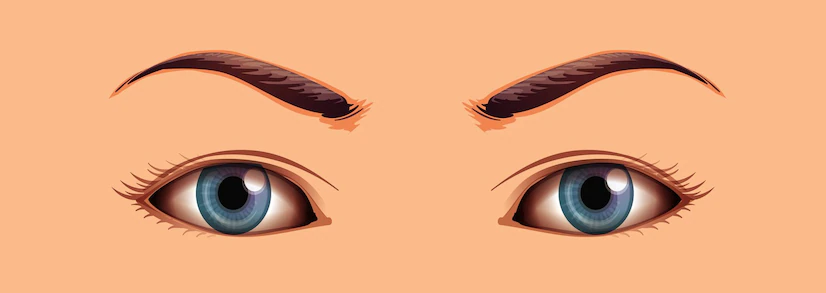Did you understand that corrective eye surgery includes a 90% success rate in restoring 20 of 20 visions to patients? The rate is even higher if you have 20 of 40 visions, which is required in most states to drive without glasses or contacts. If you have worn glasses or contacts for most of your life, you are well aware of the difficulties.
You must take care of them regularly, keep your prescription up to date, and bear all the accompanying costs. The promising news is that curative eye surgery can improve your quality of life and allow you to see well. If you are concerned about the costs, remember that most patients save money over time when it comes to glasses and contacts. Let’s look at all you need to know about eye surgery.
What is Eye Surgery?
Eye surgery, often called ocular surgery, is done on the eye or its adnexa by an ophthalmologist. The eye is a slight organ that needs individual attention before, during, and after surgical procedure to lessen or avoid additional injury.
A professional eye surgeon is in charge of determining the best surgical procedure for the patient and ensuring that all necessary safety precautions are taken. Cataracts, glaucoma, detached retinas, retinal tears, diabetic retinopathy, and nearsightedness or farsightedness are among disorders that can be treated with eye surgery.
Types of Eye Surgery
The following are a few of the most common kinds of eye surgery:
-
- Blepharoplasty
The doctor makes a small incision or incisions to remove skin and muscle, as well as to remove or rearrange fat to correct droopy eyelids.
-
- Cataract surgery
A cataract is a hazy spot in your eye’s lens that makes it difficult to see clearly. The ophthalmologist removed the clouded lens with microscopic tools and replaced it with an artificial lens.
-
- Glaucoma surgeries
A tiny tube called a shunt is inserted into the white of your eye for glaucoma implants such as the tube helps extra fluid drain out of your sight, lowering your eye pressure. The doctor creates a tiny opening in the top of your eye, under your eyelid, to allow the extra fluid to drain during a trabeculectomy.
-
- Corneal Transplant
While removing the damaged area of your cornea and replacing it with healthy donor tissue, the doctor utilizes specific equipment to keep your eye open. Doctors can do a full-thickness corneal transplant or a partial thickness corneal transplant.
Note: The cornea transplant cost and procedure varies for full-thickness corneal transplant and a partial thickness corneal transplant.
-
- LASIK surgery
The doctor changes the cornea’s curvature with a strong beam of light in this laser eye surgery, which improves vision for adults with nearsightedness, farsightedness, or astigmatism. For someone with dry eyes or thin corneas, photorefractive keratectomy, or PRK, can be utilized as a LASIK option. There are four main forms of LASIK surgery.
LASIK with a view of the water
-
- Individual eyesight and eye structure are targeted using measurements of how light passes through the eye.
LASIK with all-laser technology
-
- Instead of a surgical blade, a femtosecond laser is used.
LASIK that is wavefront-optimized or wavefront-guided
-
- This type uses precise cornea curvature measurements to maintain the natural aspheric shape of the eye’s front surface.
LASIK with topography as a guide
-
- This type makes use of mapping technologies to provide more personalized therapy.
The surgeon numbs the eyes using eye drops before LASIK to ensure patient comfort. The next produces a corneal flap with a surgical blade or a femtosecond laser. The surgeon flattens the cornea by removing a thin tissue layer.
-
- Retina procedures
A damaged or detached retina can be repaired using a variety of techniques, some of which can be used in combination. The doctor may use a freezing probe or light a laser to produce small scars that help hold your retina in place and fix a tear or hole.
Scleral buckle surgery involves the placement of a small, flexible band around the white component of your eye, which gently presses the sides of your eye toward your retina to aid in its reattachment.
Before performing the freezing or burning therapy, the doctor injects a small air bubble into the middle of your eyeball to force your retina back into a place where the bubble will dissipate on its own over time.
A vitrectomy is a procedure in which most of the vitreous is removed with a suction tool, enabling the surgeon better access to the retina and making room for the bubble. Some anaesthetics can interact with the air bubble in your eye and change its size, lasting anywhere from five days to several months after surgery. You must inform your physician or anesthesiologist if you are scheduled for any surgery soon after having pneumatic retinopexy.

Is Eye Surgery painful?
-
- Eye surgery is not painful, fortunately. Your surgeon will put numbing eye drops in both eyes right before the surgery. While there may be some pressure during the operation, you should not experience any pain. It should not be with topical numbing drops and oral sedatives.
-
- There will be some awareness and sensation of the conducted process. During surgery, a device is utilized to gently hold the eyelids open and prevent blinking, which might result in a pressure sensation. The eye is kept moisturized throughout the procedure to avoid dryness and pain.
-
- While the flap is being produced on the cornea, you will feel pressure, but thanks to the numbing medications, this should not be painful. Neither the laser treatment nor the laser treatment itself is painful. The sounds can cause anxiety in some people, but the sedative helps calm them down.
-
- How long does surgery do eyes pain after the procedure? The excellent news is that if you experience discomfort, it should pass in a few hours. It is not common to experience considerable pain after eye surgery, so make an appointment with your doctor if you do.
Cost of Eye Surgery
The eye surgery cost is determined by various criteria, including the sort of hospital you choose, your location of residency, and other related procedures depending on your circumstances. Some centres may offer you a far reduced price.
Still, you will implicitly accept the use of inferior technology, a lower level of surgeon engagement, and far less follow-up care. You might even be dissatisfied with the results.
Some centres appear to provide a low price initially, but once you have been evaluated and therapy is completed, the prices skyrocket. It is possible that a surgeon will not conduct your assessment.
A successful eye surgery is great for people fortunate enough to have no adverse effects after the procedure. However, the details mentioned above about eye surgery and the precautions you should take before treatment will keep you safe. Remember, your vision is too vital to take any chances with it.
Final Thoughts
Through this guide, you have witnessed the positive impact that eye surgery can have on your life. The above guide will give you a clearer idea of what eye surgery you can expect and the opportunity to learn about the many financing options available.
You might also want to look for some real-life stories to hear about the surgery experiences. So if you desire to move, the next step is to set up a consultation with your doctor.






